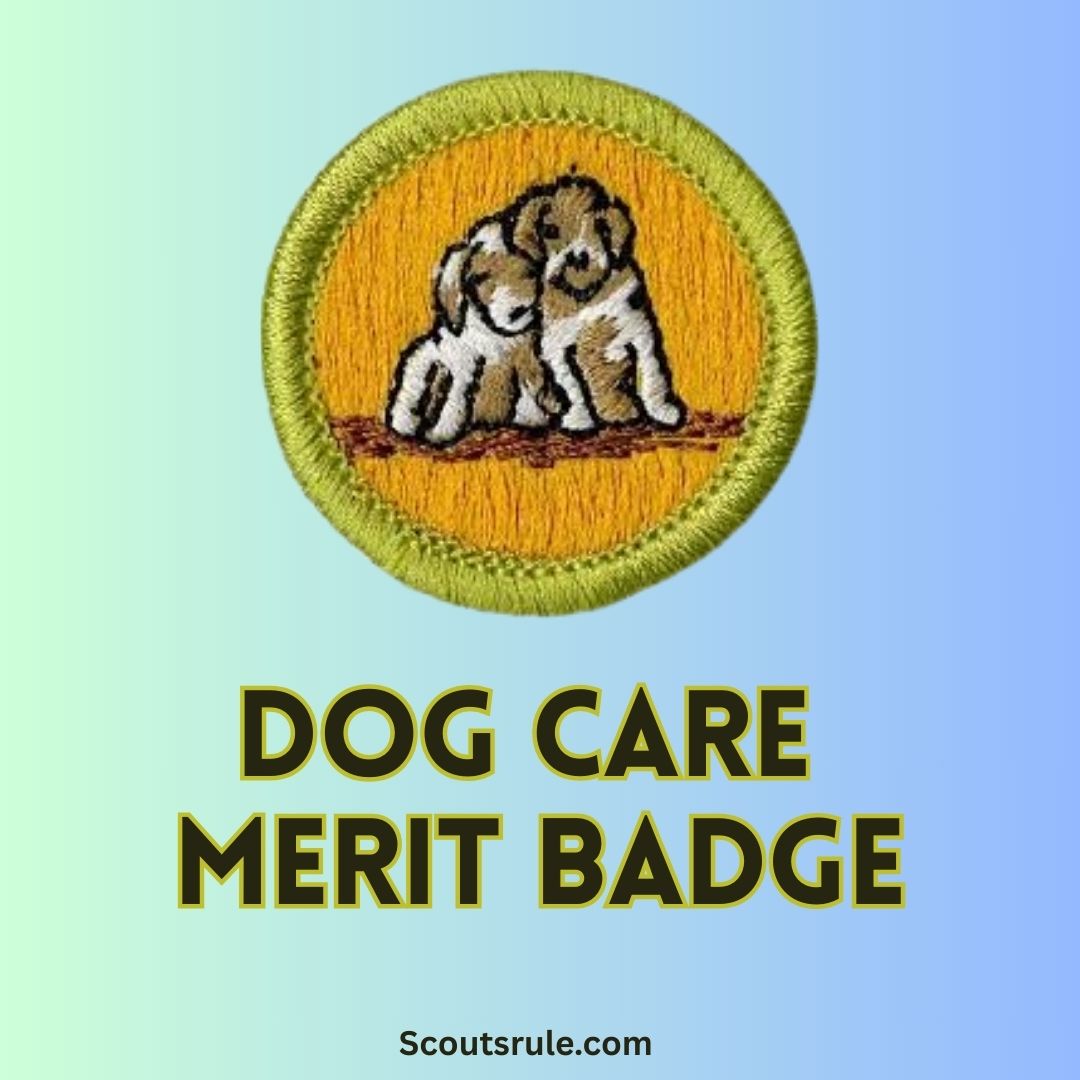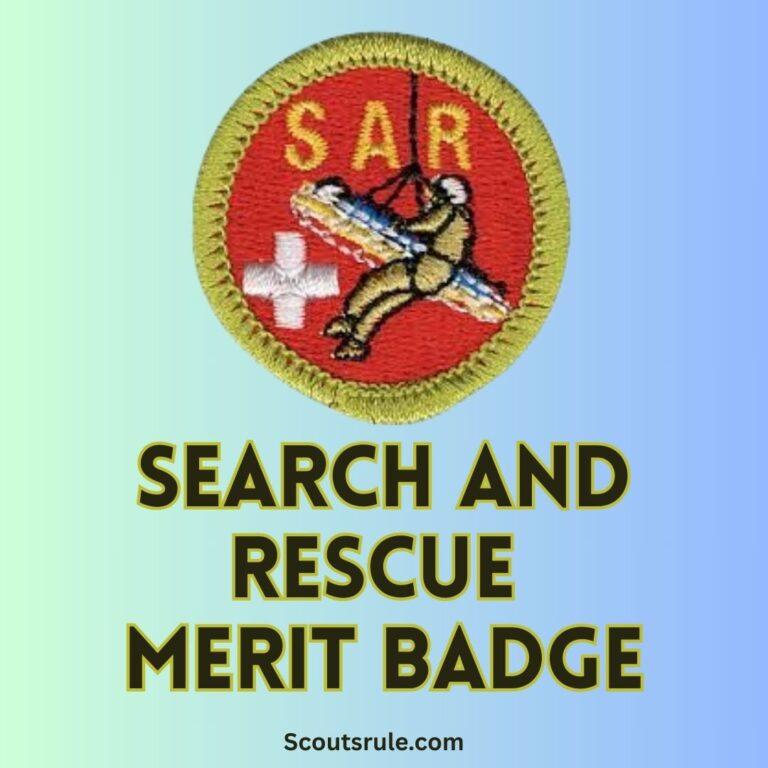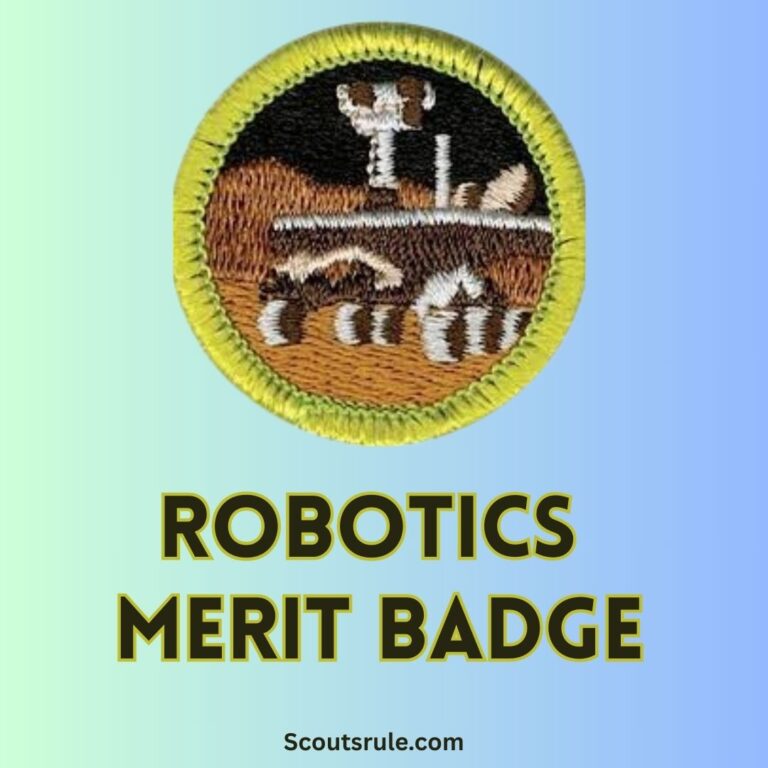
This guide is designed to help you explore the world of dog care—from understanding a dog’s history and anatomy to learning proper care, training, and health management for your canine companions. It provides an in‑depth overview of the badge’s purpose, common requirements, project ideas, and strategies for documenting your progress. Remember that this guide is intended to supplement the official Boy Scouts of America merit badge pamphlet. Always work closely with your merit badge counselor and refer to the most current official requirements to ensure your work meets local council standards.
Post Contents
- Introduction: The Joy and Responsibility of Dog Care
- 2. Purpose and Objectives
- 3. Overview of Badge Topics and Requirements
- 3.1 Requirement 1: About Dogs
- 3.2 Requirement 2: Dog Anatomy
- 3.3 Requirement 3: Pet Responsibility
- 3.4 Requirement 4: Dog Care
- 3.5 Requirement 5: Dog Training
- 3.6 Requirement 6: Dog Health
- 3.7 Requirement 7: Dog First Aid
- 3.8 Requirement 8: Veterinary Care
- 3.9 Requirement 9: Laws and Regulations
- 3.10 Requirement 10: Careers and Opportunities
- 4. Field Projects and Hands‑On Activities
- 5. Documentation, Record Keeping, and Presentation Strategies
- 6. Additional Tips, Resources, and Further Exploration
- Conclusion: Lifelong Lessons in Dog Care
Introduction: The Joy and Responsibility of Dog Care
Dogs have been humanity’s faithful companions for thousands of years. From early days of domestication for guarding, herding, and companionship to their current roles as service animals, family pets, and even police or therapy dogs, dogs hold a special place in our hearts. The Dog Care Merit Badge is an opportunity to learn about the responsibilities involved in caring for a living, breathing creature. As you discover the meaning behind dog care, you’ll learn not only basic grooming, feeding, and training techniques but also how to keep your dog healthy, safe, and well-adjusted to its environment. This badge encourages you to develop empathy, patience, and responsibility—all values that are central to Scouting.
2. Purpose and Objectives
The Dog Care Merit Badge is intended to help you:
- Learn about Dogs and Their History: Understand the origins of the dog as a domestic animal and explore how different breeds evolved to serve diverse functions for humans.
- Develop Knowledge of Canine Anatomy and Behavior: Study the parts of a dog’s body and how these contribute to communication, movement, and overall well‑being. Learn the basics of dog behavior and body language.
- Understand the Principles of Responsible Pet Ownership: Recognize the requirements for caring for a dog, including tasks like feeding, grooming, exercising, and the financial as well as emotional responsibilities.
- Master Dog Training Techniques: Practice basic training methods that encourage good behavior. Learn positive reinforcement techniques, recall methods, and ways to address undesired behavior.
- Acquire Basic Health and First-Aid Knowledge: Identify common health problems in dogs, learn how to maintain hygiene, and understand first-aid procedures specific to canines.
- Learn About Veterinary Care and Legal Regulations: Understand the importance of regular checkups, preventive measures (such as vaccinations and parasite control), and the relevant local and federal regulations that ensure your dog’s welfare (such as licensing and leash laws).
- Explore Dogs as a Career or Lifelong Interest: Investigate potential career opportunities or volunteer roles related to canine care, including roles in animal rescue, dog training, veterinary assistance, or working with animal shelters.
By working through these objectives, you build essential skills that foster a caring, responsible lifestyle and an understanding of how to nurture the bond with another living creature.
3. Overview of Badge Topics and Requirements
While the specific requirements can vary by edition of the merit badge pamphlet, many programs cover the following key topics:
3.1 Requirement 1: About Dogs
- Historical Origin and Domestication:
- Discuss the domestication of the dog and its evolution alongside humans.
- Identify the different roles dogs have played (e.g., hunting, guarding, companionship).
- Dog Groups:
- Learn about the seven major dog groups as classified by various kennel clubs (such as herding, working, sporting, terriers, toy, non-sporting, and hound).
- Describe common characteristics of each group and explain their historical functions.
- Personal Connection:
- Reflect on what made you interested in dogs and how Scouting has enhanced your understanding of them.
3.2 Requirement 2: Dog Anatomy
- Basic Anatomy:
- Learn and label the major parts of a dog’s body (e.g., head, ears, eyes, nose, legs, paws, tail).
- Create diagrams that show you understand the function of each part.
- Growth and Development:
- Discuss the changes that occur from puppyhood to adulthood.
- Health Indicators:
- Identify signs that indicate a dog is healthy (clear eyes, a shiny coat, proper weight) versus signs of potential illness.
3.3 Requirement 3: Pet Responsibility
- Day-to-Day Care:
- Learn about feeding schedules, exercise routine, and daily grooming.
- Discuss the responsibilities of a dog owner, including time, money, and emotional care.
- Training and Behavior:
- Understand basic dog behavior and how to correct misbehavior through positive reinforcement.
- Safety Considerations:
- Explain why responsible care helps prevent accidents and maintain the safety of both the dog and the community.
3.4 Requirement 4: Dog Care
- Feeding and Nutrition:
- Discuss the nutritional needs of dogs and how those needs vary with breed, age, and activity level.
- Learn about high-quality dog food, feeding portions, and schedules.
- Grooming:
- Review the grooming requirements, including bathing, brushing, nail clipping, and ear cleaning.
- Understand how grooming impacts a dog’s overall health.
- Exercise:
- Identify suitable exercise routines for different breeds and ages.
- Explain why exercise is crucial for maintaining cardiovascular health and behavior balance.
3.5 Requirement 5: Dog Training
- Basic Commands:
- Learn and practice teaching basic commands like “sit,” “stay,” “come,” and “heel.”
- Training Methods:
- Use positive reinforcement techniques as the foundation for training.
- Problem Behavior:
- Identify common behavior issues (such as excessive barking, chewing, or jumping) and discuss strategies for managing them.
- Demonstration:
- Practice and demonstrate one or more training techniques either on a family pet or through a simulation if a pet is not available.
3.6 Requirement 6: Dog Health
- Recognizing Illness:
- Learn the common signs of illness in dogs (change in appetite, lethargy, unusual behaviors).
- Preventive Care:
- Understand the importance of vaccinations, parasite control, and routine veterinary care.
- Environmental Considerations:
- Discuss how to keep the living environment clean and safe for dogs, including handling waste and avoiding toxins.
3.7 Requirement 7: Dog First Aid
- Basic First-Aid:
- Study basic first-aid procedures for common injuries such as cuts, scrapes, or heat-related conditions.
- Emergency Situations:
- Know the steps to take in more serious emergency situations, such as choking or an allergic reaction.
- Practical Exercises:
- If available, practice first-aid techniques using a dog first-aid kit under adult supervision.
- Documentation:
- Record what you learn in a step-by-step first-aid guide.
3.8 Requirement 8: Veterinary Care
- Importance of Regular Vet Visits:
- Understand why regular checkups are essential for maintaining a dog’s health.
- Preventive Healthcare:
- Learn about vaccination schedules, dental care, and regular health screenings.
- Cost and Budgeting:
- Briefly consider the financial responsibilities involved in caring for a dog.
- Practical Component:
- If possible, attend a veterinary clinic session or interview a veterinarian about preventive dog health practices.
3.9 Requirement 9: Laws and Regulations
- Local and Federal Laws:
- Learn about the laws concerning dog ownership, such as licensing, leash laws, and vaccinations.
- Responsible Ownership:
- Discuss how adhering to these laws helps protect the community and ensures the welfare of the animal.
- Personal Reflection:
- Reflect on the importance of these regulations as a part of civic responsibility.
3.10 Requirement 10: Careers and Opportunities
- Career Exploration:
- Research potential careers related to animal care such as veterinary medicine, dog training, animal behavior, or pet welfare advocacy.
- Volunteering and Community Service:
- Identify opportunities to volunteer at animal shelters or pet rescue organizations.
- Future Outlook:
- Reflect on how responsibility for another living creature can translate into skills and experiences useful in future personal and even professional endeavors.
4. Field Projects and Hands‑On Activities
Practical experience is a critical part of the Dog Care Merit Badge. Here are some project and activity ideas:
- Daily Care Practice: If you have a family dog or access to a dog from a local shelter, spend time feeding, grooming, and exercising the dog. Maintain detailed records of its feeding schedule, behavior, and any challenges you encounter.
- Training Sessions: Practice basic commands and training exercises. Work on commands such as “come,” “sit,” or “stay” and document your methods, progress, and any difficulties.
- Health Monitoring: Practice examining a dog for signs of illness or discomfort (such as checking its eyes, ears, coat, and overall behavior) using guidelines provided by a veterinarian or reputable pet care resource.
- Visit a Veterinarian: If possible, attend a veterinarian’s office (or schedule an interview) to learn about routine care, vaccinations, and preventive health practices.
- Legal and Ethical Study: Research local dog licensing laws, leash law regulations, and the importance of vaccinations. Prepare a small report that summarizes your findings and reflects on how these laws protect both the dog and the community.
- Memorabilia & Scrapbook: Create a scrapbook or digital portfolio that includes photographs of your projects, copies of any veterinary documents, training logs, and personal reflections on caring for a dog.
Document every project through journal entries, photographs, diagrams, and written narratives. These records will be essential to your final portfolio.
5. Documentation, Record Keeping, and Presentation Strategies
Accurate and organized documentation is critical to your success:
- Detailed Journal: Maintain daily or weekly entries, including the date, location, activities conducted (such as feeding, training, grooming), observations about the dog’s behavior, and reflections on what you learned.
- Photographic Evidence: Use photographs to document hands‑on activities such as grooming, feeding, or training sessions. Annotate the images with dates and descriptions.
- Organized Portfolio: Assemble your journals, written reports, photographs, sketches, legal research, and any interview transcripts into one organized binder or digital folder. Use a clear table of contents and section dividers to help your merit badge counselor review your work.
- Final Presentation: Create a final presentation—this might be a slide show, a digital poster, or an oral report—that summarizes your experiences. Emphasize what you learned about dog care, the responsibilities of pet ownership, and how Scouting values are reflected in your approach to caring for a living creature.
6. Additional Tips, Resources, and Further Exploration
Additional Tips
- Practice Consistently: Working with a dog requires regular, hands‑on practice. Ensure you set aside dedicated time for care and training to build your proficiency and confidence.
- Engage with Experts: Talk to professional dog trainers, veterinarians, or animal shelter staff. Their insights can deepen your understanding and provide practical tips that you can incorporate into your daily care routine.
- Use Reliable Resources: Books on dog care, training, and veterinary medicine offer valuable information. Trusted websites like the American Kennel Club (AKC) or reputable veterinary clinics can also provide current advice.
- Respect Your Dog’s Needs: Every dog is unique. Pay attention to the dog’s specific behavior, personality, and needs. This personalized approach is important for both successful training and responsible care.
- Reflect on Your Personal Growth: Caring for a dog is a journey that builds empathy, responsibility, and self-discipline. Reflect on how these experiences contribute to your development as both a Scout and a future leader.
Recommended Resources
- Official BSA Dog Care Merit Badge Materials: Begin with the official BSA requirements for the Dog Care Merit Badge for the most current guidelines.
- Books and Magazines: Popular titles include “The Art of Raising a Puppy” by the Monks of New Skete, “How to Raise the Perfect Dog” by Cesar Millan, and other reputable dog care guides.
- Websites and Online Articles: Trusted websites like the American Kennel Club (AKC), ASPCA, or veterinary service sites offer articles, videos, and tips on dog care, behavior, and health.
- Local Animal Shelters and Vet Clinics: Many local shelters or vet clinics offer volunteer opportunities or workshops on dog care and training. Joining these programs can provide practical, real-life experience.
- Experimental Videos: YouTube channels dedicated to pet care and training can be valuable for step-by-step demonstrations on grooming, training, and first-aid techniques.
Career Connections
The skills gained through the Dog Care Merit Badge can have applications in several career paths:
- Veterinary Medicine and Animal Care: Serve as a veterinary assistant, animal behaviorist, or even pursue a career as a veterinarian.
- Professional Dog Training: Work with special populations or in obedience training, agility training, or service dog work.
- Animal Shelter and Rescue Work: Provide care for dogs in need and work with community animal care organizations.
- Pet-Related Business and Entrepreneurship: Explore careers in pet grooming, pet food manufacturing, or pet supplies retail.
Reflect on these possibilities as you complete your badge, and consider how your newfound skills can influence your future educational and career choices.
Conclusion: Lifelong Lessons in Dog Care
Earning the Dog Care Merit Badge is much more than simply learning how to care for a pet; it is about embracing the values of responsibility, service, and compassion. Through learning the history of dog domestication, understanding the basics of dog anatomy and behavior, mastering the day-to-day tasks of feeding, grooming, and training, and addressing health and legal responsibilities, you gain invaluable life skills. These skills promote empathy, discipline, and preparedness in all areas of life.
As you compile your documentation—your detailed journal entries, photographs, maps, and final presentations—you create a lasting record of your journey that not only meets the requirements of the merit badge but also builds a foundation for future endeavors in animal care and beyond.
May your experiences with the Dog Care Merit Badge inspire you to continue exploring the bond between humans and animals, to seek further opportunities to care for and advocate for the well-being of dogs, and to carry the lessons learned here into every facet of your future life.
Happy caring, and may your journey as a responsible and compassionate pet owner guide you toward a bright and fulfilling future!

Hi, Robin here, A former lead Scout and here I share my inspiring stories about USA Scouts, leadership, adventure, how to guides and more.






